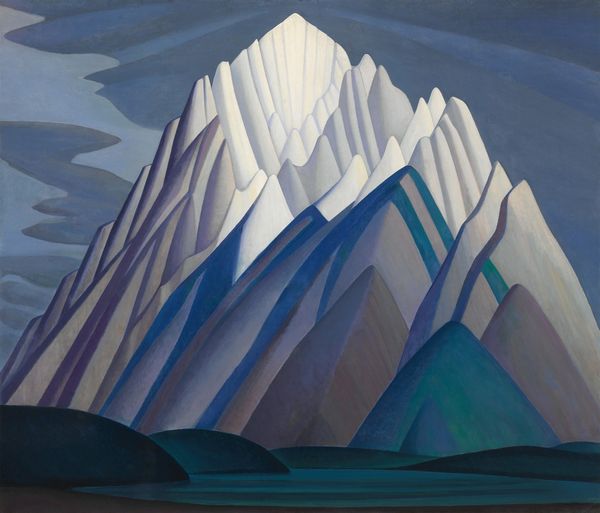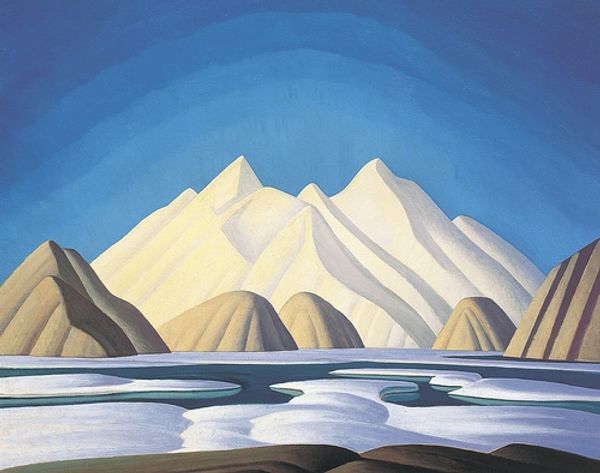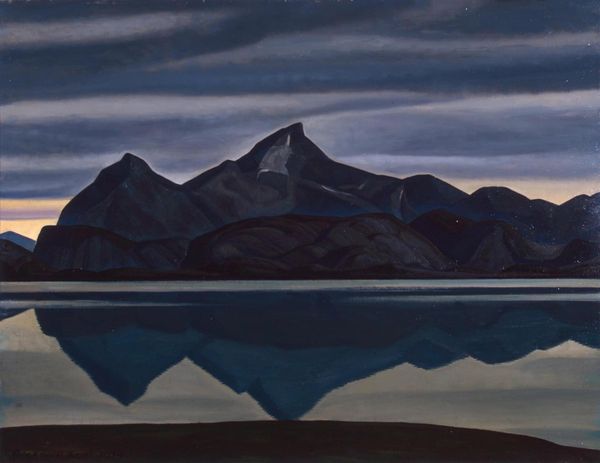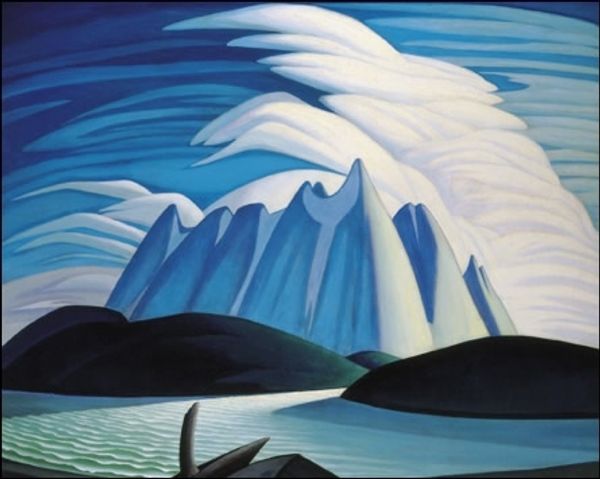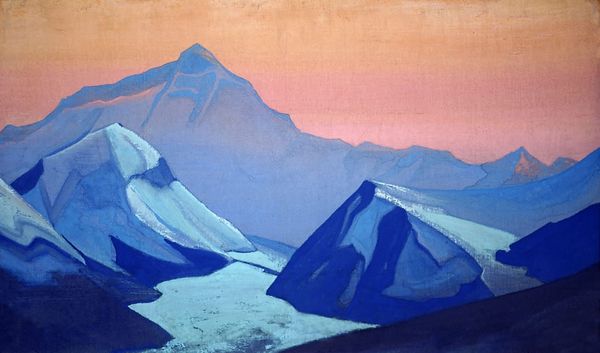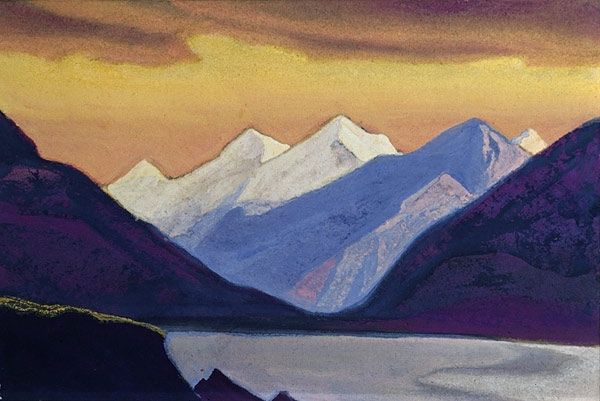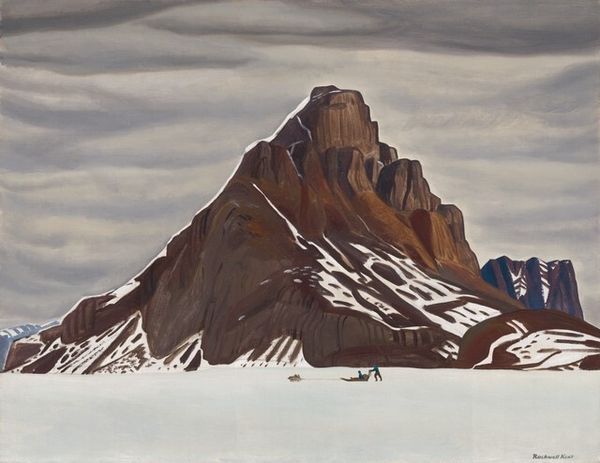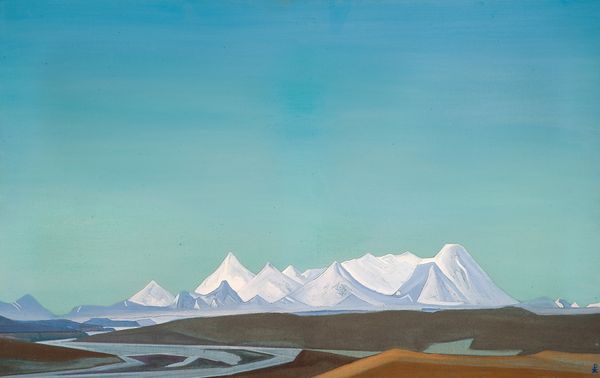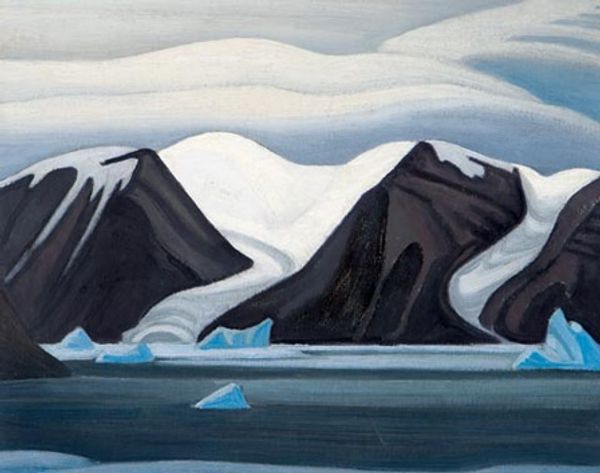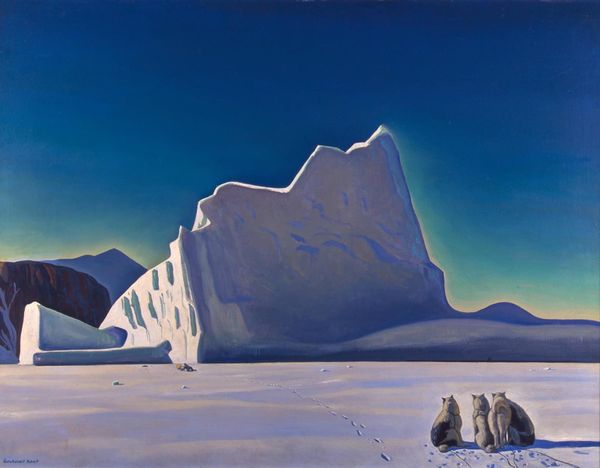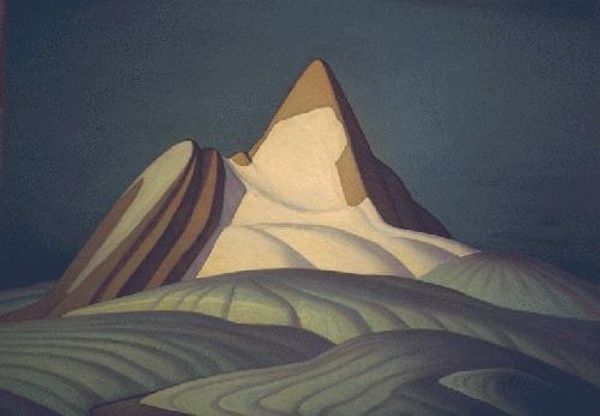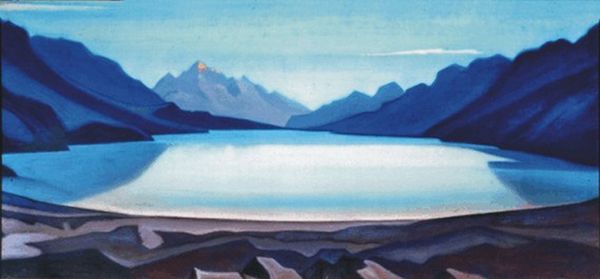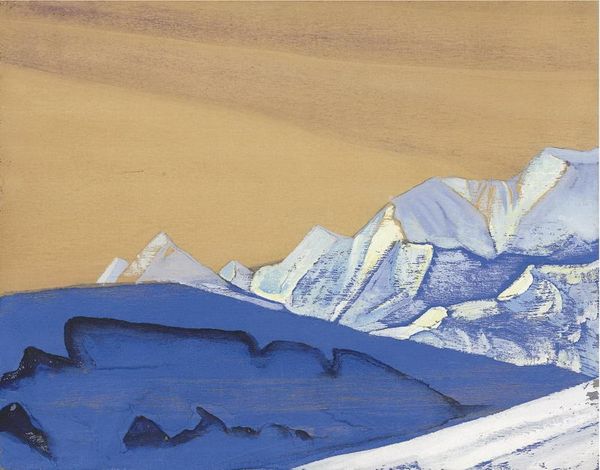
Copyright: Lawren Harris,Fair Use
Curator: Lawren Harris painted “Mount Thule, Bylot Island” in 1930. The stark beauty of the Arctic landscape, rendered in oil paint, commands our attention. Editor: Yes, the way Harris depicts those mountains is almost architectural, don't you think? A striking composition; those severe peaks receding into a cold sky… Curator: Harris was deeply involved in theosophy at this time. The paintings reflect a spiritual search; look how simplified forms and colour express the underlying essence. This was during a period when the Group of Seven’s art was garnering considerable critical attention and shaping a distinctly Canadian visual identity. Editor: He uses a surprisingly smooth application of paint, considering the ruggedness of the subject. What about the surface tells us of the period and the Group of Seven’s production strategies? Did his choices in materiality impact public reception? Curator: Absolutely. The paintings aimed for a distinctly modern expression of the Canadian North, far removed from European traditions. The handling of paint enhances the monumental quality, aligning with his belief in revealing transcendental truth. Editor: What interests me, though, is how these iconic landscapes entered into public consciousness. Harris showed extensively, solidifying both his reputation and a very specific imagery of the North connected with nationhood, an ideology very much cultivated and shaped by institutional forces in Canada at the time. Curator: Indeed. And beyond gallery settings, reproductions in magazines and calendars turned these canvases into widely disseminated emblems of Canada, thus imbuing it with both cultural and material value. Editor: And his choice of subject matter? What role did pristine nature play in the narrative of a young nation eager to forge a separate identity from its colonial past? It's remarkable to see the convergence of artistic pursuit and socio-political agendas. Curator: It does invite contemplation on the intersection between spiritual intent, artistic practice, and nation-building during the interwar period in Canada. Editor: Thinking about the processes involved certainly enriches how we consider its meaning and ongoing public value today.
Comments
No comments
Be the first to comment and join the conversation on the ultimate creative platform.
